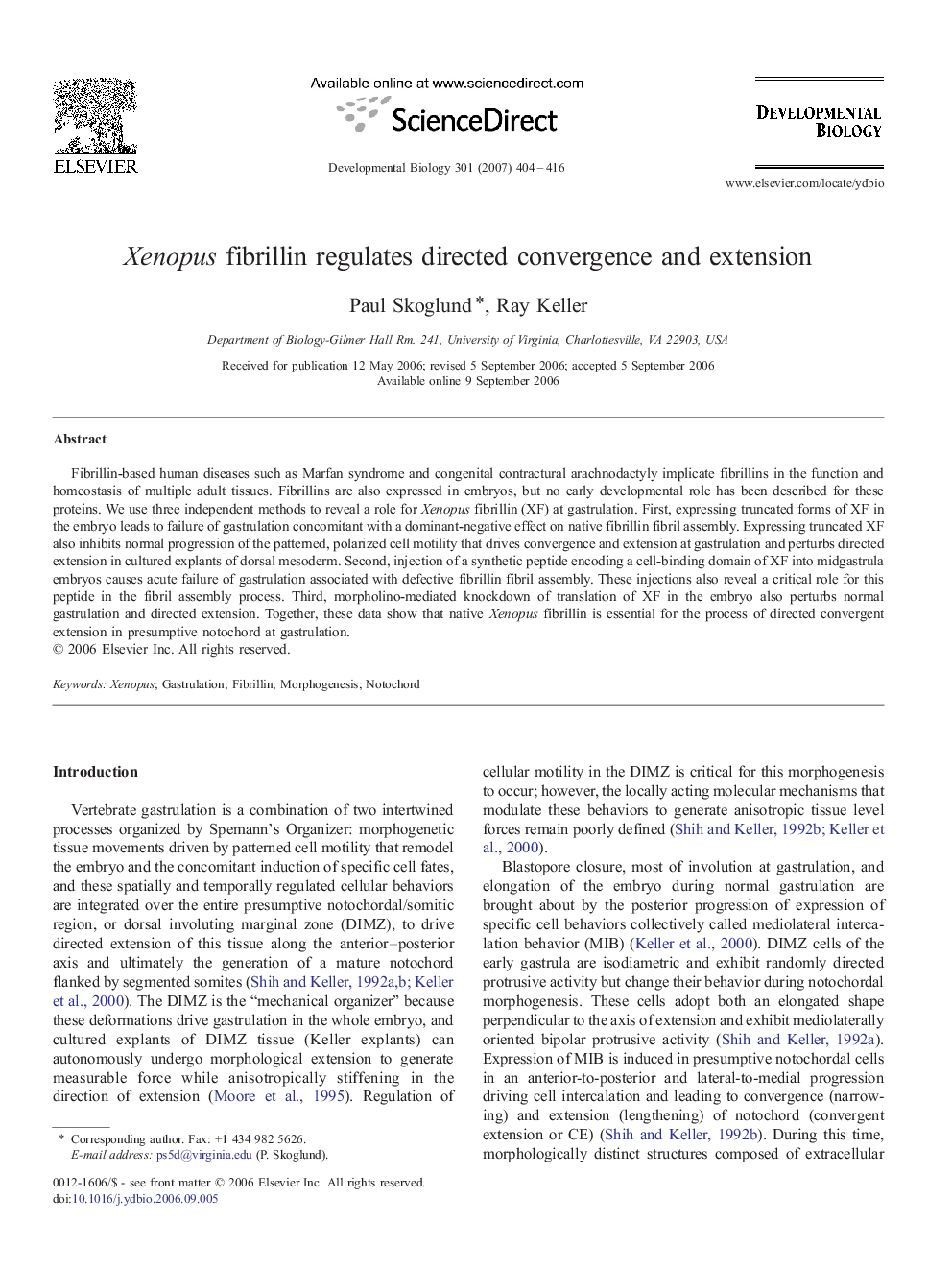| Article ID | Journal | Published Year | Pages | File Type |
|---|---|---|---|---|
| 2175299 | Developmental Biology | 2007 | 13 Pages |
Fibrillin-based human diseases such as Marfan syndrome and congenital contractural arachnodactyly implicate fibrillins in the function and homeostasis of multiple adult tissues. Fibrillins are also expressed in embryos, but no early developmental role has been described for these proteins. We use three independent methods to reveal a role for Xenopus fibrillin (XF) at gastrulation. First, expressing truncated forms of XF in the embryo leads to failure of gastrulation concomitant with a dominant-negative effect on native fibrillin fibril assembly. Expressing truncated XF also inhibits normal progression of the patterned, polarized cell motility that drives convergence and extension at gastrulation and perturbs directed extension in cultured explants of dorsal mesoderm. Second, injection of a synthetic peptide encoding a cell-binding domain of XF into midgastrula embryos causes acute failure of gastrulation associated with defective fibrillin fibril assembly. These injections also reveal a critical role for this peptide in the fibril assembly process. Third, morpholino-mediated knockdown of translation of XF in the embryo also perturbs normal gastrulation and directed extension. Together, these data show that native Xenopus fibrillin is essential for the process of directed convergent extension in presumptive notochord at gastrulation.
